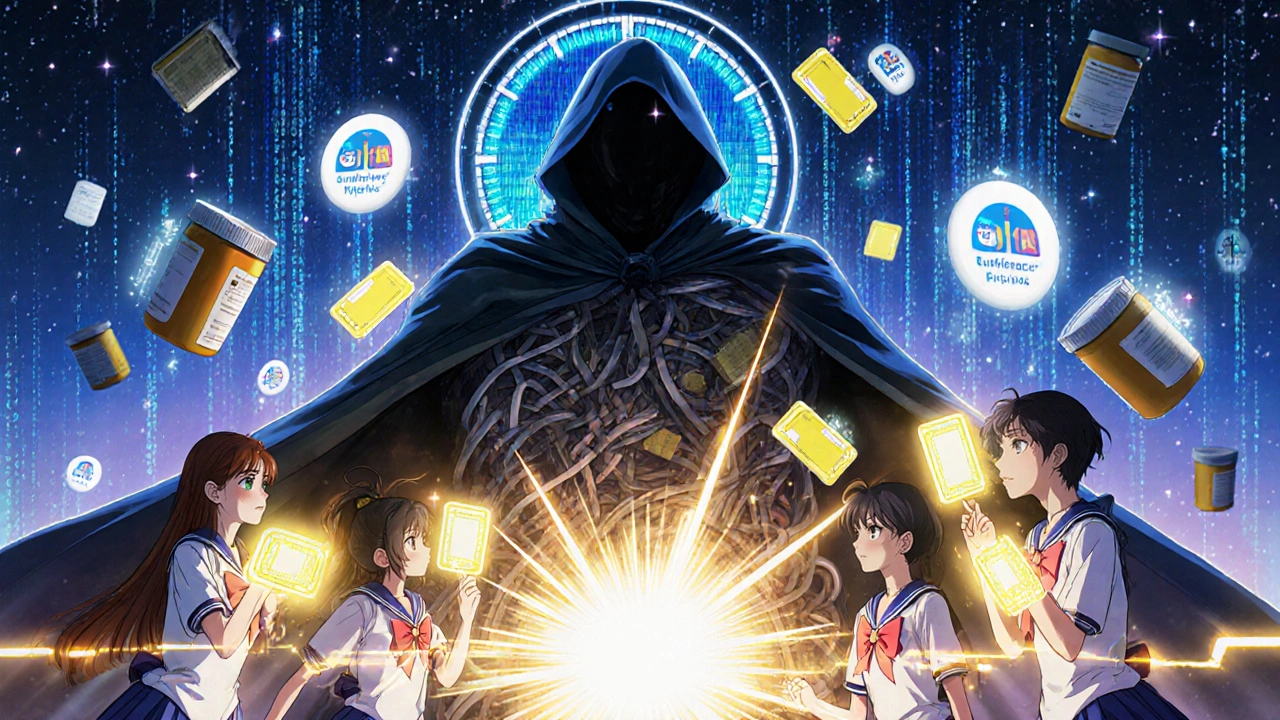Adverse Event Reporting Simulator
This tool demonstrates the critical gap between actual adverse drug reactions and reported cases. Based on FDA data showing only 1-10% of side effects are reported, you'll see how many cases go undetected.
Results
Actual side effects: 0
Reported side effects: 0
Unreported cases: 0
Reporting efficiency: 0%
Ratio (reported:actual): 0:1
For every 1 reported case: 0 cases remain unreported
The Vioxx case: 80 million people used the drug before safety concerns were identified. At a 1% reporting rate, only 800,000 of 8 million potential adverse events would have been reported.
When a new drug hits the market, doctors and patients assume it’s safe. But here’s the truth: post-marketing pharmacovigilance is the only system that catches the side effects clinical trials miss. Most drugs are tested on a few thousand people over months or a couple of years. Real life? Millions of people, with different ages, other illnesses, and multiple medications - all at once. That’s where things go wrong, and that’s where safety monitoring kicks in.
Why Clinical Trials Don’t Catch Everything
Clinical trials are tightly controlled. Participants are carefully selected - no pregnant women, no kidney disease, no other drugs interfering. That’s good science. But it’s not real life. A drug might look perfectly safe in a trial of 3,000 people. Then it’s given to 2 million. Suddenly, a rare heart rhythm problem shows up in people over 70 who also take blood pressure pills. That’s the kind of interaction trials simply can’t predict. The numbers tell the story. The FDA approved 55 new drugs in 2023. Of those, 71% were required to have follow-up safety studies after approval. And here’s the kicker: according to the FDA’s own data, 78% of serious safety issues for drugs approved between 2001 and 2010 were found only after they were on the market. Some didn’t show up until five or more years later.How Side Effects Are Caught After Approval
There are four main ways new side effects are spotted once a drug is out there.- Spontaneous reporting: Doctors, pharmacists, and even patients report unusual reactions. In the U.S., that’s the MedWatch system. In the UK, it’s the Yellow Card Scheme. The FDA gets about 1.2 million reports a year. The EU’s EudraVigilance database holds over 28 million reports from 108 countries. But here’s the problem: experts estimate only 1% to 10% of actual side effects get reported. Most people don’t know how, or think it’s not their job.
- Electronic health record mining: Systems like the FDA’s Sentinel Initiative scan data from over 300 million patient records across hospitals and clinics. It looks for patterns - like a spike in liver enzyme levels after a new diabetes drug was prescribed. This is active surveillance. It doesn’t wait for someone to report. It finds signals automatically.
- Prescription event monitoring: Used heavily in the UK, this tracks every prescription for a new drug and follows up with patients to see what happens. It’s slow, but thorough. It caught the link between a certain painkiller and stomach bleeding years before other systems did.
- Record linkage: Health databases are connected - prescriptions, hospital admissions, death records. If people taking Drug X are ending up in the hospital for heart failure at twice the normal rate, the system flags it. The UK’s Clinical Practice Research Datalink (CPRD) covers 45 million patients. That’s a goldmine for spotting hidden risks.
The Vioxx Case: When Pharmacovigilance Saved Lives
Vioxx, a popular painkiller, was approved in 1999 after trials with 5,000 patients showed no major heart risks. But after it was used by over 80 million people, the data started to pile up. By 2004, studies confirmed users had nearly double the risk of heart attack or stroke. Merck pulled it off the market. That’s not a failure of pharmacovigilance - it’s proof it works. Without post-marketing monitoring, that drug would’ve kept killing people for years.
Who Reports and Why It’s Still Not Enough
Healthcare professionals are supposed to be the main reporters. In the UK, 63% of Yellow Card reports come from doctors and pharmacists. But a 2022 survey found 68% of U.S. physicians found reporting to MedWatch “cumbersome,” taking an average of 22 minutes per form. Many just don’t have the time. Patients? Only 12% know about MedWatch. But when asked, 83% said they’d report side effects if it was easy - like a simple app or a checkbox during a pharmacy visit. The problem isn’t lack of concern. It’s lack of access. And then there’s the gap between rich and poor countries. The EU reports 182.7 side effect reports per 100,000 people. In Africa, it’s 0.2. That’s not because people there don’t have side effects. It’s because systems don’t exist to track them.What Happens When a Signal Is Found
Finding a signal is just the start. The next step is proving it’s real. EudraVigilance’s algorithms flagged 1,843 potential safety issues in 2022. Only 287 were confirmed as real risks. That’s a 15% confirmation rate. It takes time. Experts dig into the data, rule out other causes, check if the pattern holds across different populations. If it’s confirmed, regulators act. They might:- Add a black box warning to the label
- Require doctors to complete special training before prescribing
- Limit who can get the drug - like only for severe cases
- Force the company to run a new study
- Or, as with Vioxx and thalidomide, pull the drug entirely

Technology Is Changing the Game
The old way - waiting for humans to report - is being replaced by machines. The FDA’s Sentinel System 3.0, launched in 2023, uses artificial intelligence to scan 5 million new patient records every day. It spots patterns in doctor’s notes, lab results, and prescriptions that no human would catch in time. It’s 73% faster than the old system. In the UK, the Yellow Card app lets pharmacists report side effects in under 90 seconds. In Japan, companies must monitor new drugs for 4 to 10 years after approval. In the EU, a single database will replace 27 national systems by 2025. That means fewer duplicates, faster alerts. Even social media is being used. IBM Watson Health’s system scanned tweets and forums in 2023 and predicted adverse reactions with 87.4% accuracy. It’s not perfect - but it’s a new layer of early warning.The Future: Real-World Evidence Is the New Standard
The days of relying only on clinical trials are over. By 2030, McKinsey predicts 65% of regulatory decisions will be based on real-world data from post-marketing systems. That’s up from 28% in 2022. The goal? To catch risks before they become epidemics. To tailor treatments based on genetics - like screening for the HLA-B*15:02 gene before prescribing carbamazepine, which cut severe skin reactions by 95% in Southeast Asia. It’s not just about avoiding disasters. It’s about making medicine safer for everyone. For the 70-year-old on five medications. For the teenager with a rare autoimmune disease. For the mother who’s breastfeeding and needs pain relief.What You Can Do
You don’t need to be a doctor to help. If you notice something unusual after starting a new medication - fatigue you can’t explain, a rash that won’t go away, dizziness that comes with walking - report it. You don’t need to be certain. You just need to be observant. In the UK, use the Yellow Card app. In the U.S., go to MedWatch online. Even a short note helps. That report might be the one that leads to a warning, a change in dosing, or even a drug being pulled before it harms someone else. Post-marketing pharmacovigilance isn’t magic. It’s messy, slow, and underfunded in places. But it’s the last line of defense. And without it, we’d be flying blind.How long after a drug is approved do side effects usually show up?
Side effects can appear anytime after approval - even years later. The FDA found that 31% of serious safety issues for drugs approved between 2001 and 2010 weren’t detected until more than five years after the drug hit the market. Some rare reactions only show up when millions of people use the drug, especially those with other health conditions or taking multiple medications. That’s why ongoing monitoring is critical.
Are all side effects reported to regulators?
No. Experts estimate only 1% to 10% of actual adverse drug reactions are reported. Many patients don’t know how or where to report. Doctors are often too busy. Some side effects are mistaken for normal aging or unrelated illnesses. This underreporting is a major challenge in pharmacovigilance, which is why systems using electronic health records and AI are becoming so important.
Can patients report side effects themselves?
Yes. Patients can and should report side effects. In the U.S., anyone can submit a report to MedWatch. In the UK, the Yellow Card Scheme allows patients to report directly through a mobile app or website. Even a simple note like “Started drug X and got severe dizziness after 3 days” can trigger a safety review. Your report could help prevent harm to others.
Why do some drugs get pulled from the market years after approval?
Drugs are pulled when post-marketing data reveals serious, unanticipated risks that outweigh the benefits. The most famous example is Vioxx, which was withdrawn in 2004 after studies showed it doubled the risk of heart attack and stroke in long-term users. Clinical trials didn’t catch this because they were too small and too short. Only when millions of people used the drug did the pattern become clear.
Is pharmacovigilance the same everywhere in the world?
No. The U.S. and EU have strong systems, but they work differently. The U.S. relies on passive reporting (MedWatch) plus active surveillance (Sentinel). The EU uses a centralized database (EudraVigilance) with strict rules across all member states. Countries like Japan require mandatory long-term monitoring. But many low-income countries lack the infrastructure - some report as few as 0.2 adverse events per 100,000 people, compared to over 180 in the EU. Global coordination is improving, but big gaps remain.

Scott Dill
October 31, 2025 AT 10:40Wow, this is wild. I had no idea most side effects only show up after millions of people use a drug. My grandma started a new blood pressure med and got dizzy for weeks - she thought it was just aging. If someone had asked her to report it, maybe others wouldn’t have gotten stuck with the same crap.
Erin Corcoran
November 2, 2025 AT 08:15As a pharmacist, I’ve seen this firsthand. MedWatch is a nightmare - 22 minutes per form? 😩 I’ve got 12 patients waiting. But I still report. Just last month, I flagged a combo of metformin + statin causing weird neuropathy in 3 seniors. FDA reached out. They’re looking into it. Small wins, right? 🙌
Kathy Pilkinton
November 3, 2025 AT 04:43Of course the system’s broken. Doctors are overworked, patients are clueless, and pharma companies are too busy lobbying to care. But hey, at least we have AI now. Let the robots sort through 5 million records a day while we sip our coffee and pretend we’re saving lives.
Niki Tiki
November 4, 2025 AT 08:39USA still has the best system in the world. Europe’s drowning in bureaucracy. India? They can’t even track flu shots properly. If you want safety, you go American. No debate.
shivam mishra
November 5, 2025 AT 21:54In India, we don’t even have proper reporting systems in rural clinics. I’ve seen patients take antibiotics for months with rashes and fever - no one asks, no one records. It’s not that they don’t have side effects. It’s that no one’s watching. We need mobile reporting tools, not just fancy AI from the US.
John Kane
November 6, 2025 AT 21:49Let’s be real - pharmacovigilance isn’t some magic shield. It’s a patchwork of tired docs, overwhelmed pharmacists, and patients who think ‘dizziness’ is just part of getting older. But here’s the beautiful part: every single report matters. Even if it’s just ‘I got a weird rash after taking Zoloft.’ That tiny note? Could be the one that saves a kid in Nebraska from a fatal reaction five years from now. We’re not just collecting data - we’re building a safety net, stitch by stitch. And yeah, it’s slow. And yeah, it’s messy. But without it? We’re just guessing. And guessing kills people. So if you’re reading this and you’ve ever felt ‘off’ after a new med? Don’t brush it off. Don’t think ‘it’s probably nothing.’ Send that report. Even if it’s one sentence. Even if you’re not a doctor. You’re not just helping yourself. You’re helping everyone.
Callum Breden
November 7, 2025 AT 19:23This article is a textbook example of wishful thinking. You cite FDA statistics like they’re gospel, but the reality is that 90% of spontaneous reports are noise. Bad data. Misattributed symptoms. A patient takes a new drug, gets a headache, and blames it on the pill - when it’s just stress. And now we’re spending billions on AI to sift through this garbage? The regulatory apparatus is bloated, inefficient, and dangerously overconfident in its own signal detection. This isn’t science - it’s bureaucratic theater.
Penny Clark
November 8, 2025 AT 13:22my sister had a bad reaction to a new antidepressant and no one knew what to do. we didn’t even know you could report it. i found the medwatch site by accident. it took me 45 mins just to fill out the form. i cried while doing it. but i did it. and now i tell everyone: if something feels wrong after a new med? report it. it’s not your fault. it’s not ‘just in your head.’ it’s data. and data saves lives. 💔🩺
Holly Dorger
November 8, 2025 AT 23:37so i just reported my chronic migraines after starting the new blood pressure med. didn't know i could. thought it was just stress. turns out it's a known side effect. 3 other people reported it too. now it's on the warning label. who knew my headache helped someone else? 🤷♀️
Mike Gordon
November 9, 2025 AT 03:23the EU’s EudraVigilance has 28 million reports but half are duplicates because every country inputs differently. why not just merge it all? why do we still have 27 systems? this is like having 27 different weather apps for one country. it’s ridiculous. fix the plumbing before adding fancy AI faucets
Arrieta Larsen
November 10, 2025 AT 04:45I used to think side effects were just ‘bad luck.’ Now I know they’re a systemic failure of attention. My dad died from a reaction to a drug that had been on the market for 12 years. No one knew. No one reported. No one cared. If one more person reads this and decides to report a weird symptom - maybe it’ll save someone’s dad.
Jackson Olsen
November 11, 2025 AT 20:37my pharmacist showed me the yellow card app. 90 seconds. i reported my nausea after the new statin. 2 weeks later they sent me a thank you. felt good. like i actually did something
Amanda Nicolson
November 12, 2025 AT 16:58Let me tell you about my cousin. She took a new arthritis drug. Started getting chest pain. Went to the ER. They said it was anxiety. She went home. Two months later, she had a heart attack. Turns out, the drug caused QT prolongation in elderly women on diuretics. The FDA didn’t know until 17 other cases popped up. She’s fine now. But she’ll never take another drug without asking: ‘Has this been reported?’ And neither will I. We need to turn every patient into a watchdog. Not because we distrust doctors - but because we know the system is still blind. And we can help it see.
Mansi Gupta
November 13, 2025 AT 02:32As someone from India, I appreciate the emphasis on global equity. But I also recognize that without infrastructure, even the best systems remain theoretical. Perhaps the solution lies not in replicating Western models, but in designing lightweight, mobile-first reporting tools tailored for low-resource settings - integrated with community health workers, SMS-based alerts, and multilingual interfaces. Innovation doesn’t always mean AI; sometimes, it means simplicity.